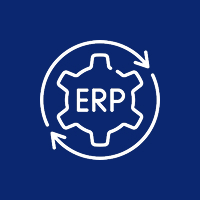In contemporary software development, especially in the .NET environment, coding clean, maintainable, and scalable code isn’t merely a best practice—it’s a requirement. As complexity and size increase over the course of a project, architectural choices made during initial stages can significantly determine long-term performance, stability, and development pace. This is where the SOLID principles fit in.
SOLID is a collection of five design rules that advocate for more efficient software structure and object-oriented design. Adhering to these principles allows .NET developers to build code that is simpler to test, extend, and refactor—resulting in software that can adapt to business requirements.
This blog post explores each of the SOLID principles in detail, showing how they’re applied in .NET programming. You’ll learn why these principles matter and how they can enhance the structure, maintainability, and quality of your applications.
What Are the SOLID Principles?
SOLID is an acronym for five fundamental principles of object-oriented design and programming:
- Single Responsibility Principle (SRP)
- Open/Closed Principle (OCP)
- Liskov Substitution Principle (LSP)
- Interface Segregation Principle (ISP)
- Dependency Inversion Principle (DIP)
Each of these principles helps in designing systems that are more modular, flexible, and resistant to change.
1. Single Responsibility Principle (SRP)
The Single Responsibility Principle states that a class should have only one reason to change, meaning it should have only one job or responsibility. In .NET projects, this helps avoid tightly coupled code where a single class is overloaded with multiple concerns—such as data access, business logic, and user interface code all in one place.
By isolating responsibilities, your code is simpler to read, maintain, and test. It also makes it possible for different areas of the application to change independently, lessening the ripple effect of modifications.
2. Open/Closed Principle (OCP)
The Open/Closed Principle leads you to create software entities that are open for extension but closed for modification. That is, you should be able to implement new behavior without modifying existing, tested code.
This is particularly helpful in .NET programming where programs usually have to accommodate numerous business rules or workflows. Rather than altering current classes whenever requirements evolve, developers can add behavior through inheritance, interfaces, and dependency injection. This encourages stability and minimizes the risk of adding bugs into stable code.
3. Liskov Substitution Principle (LSP)
The Liskov Substitution Principle guarantees that derived class objects can replace base class objects in a program without compromising correctness. Though it might sound theoretical, in reality, it’s all about maintaining expectations.
In a.NET environment, this translates into structuring class hierarchies so that subclasses maintain the contract established by their superclass. Failing to honor this principle produces brittle code whose behavior is erratic when varying implementations are brought to bear, more often than not resulting in runtime exceptions or weird behavior.
If developers adhere to LSP, they can then use polymorphism with confidence knowing that their pieces will work well together no matter what implementation happens to be involved.
4. Interface Segregation Principle (ISP)
The Interface Segregation Principle encourages the notion that no client should be made to rely on methods it does not implement. In real-world application, this translates into preferring smaller, more specific interfaces over big, general-purpose interfaces.
In.NET, it’s usual to utilize interfaces for dependency injection and abstraction. Through designing targeted interfaces, developers make the classes only answerable for whatever they require. This makes things easier to implement and test, as well as making the system more flexible.
Bloated, big interfaces are most likely to produce unnecessary dependencies, which result in a tightly coupled system that is more difficult to alter. By following ISP, one can have more well-defined contracts and lower the cognitive burden on developers when they work with large codebases.
5. Dependency Inversion Principle (DIP)
The Dependency Inversion Principle says that high-level modules must not depend on low-level modules. Rather, they should both depend upon abstractions. And abstractions must not depend on details—details must depend on abstractions.
In.NET programming, this is best realized using Dependency Injection (DI), a fundamental feature in contemporary frameworks such as ASP.NET Core. By relying on interfaces instead of concrete classes, applications are made more modular, testable, and loosely coupled.
DIP assists you in creating systems whereby components can easily be swapped out or upgraded without having to recreate significant parts of the application, enabling a plug-and-play model that allows for long-term development and flexibility.
Why SOLID is Important in.NET Development
Applying SOLID principles has a major advantage to your development process and the end product:
Enhanced Maintainability: Changes are contained to smaller, specialized pieces of the system, which is simpler to update and correct bugs.
Scalability: A loosely coupled, well-organized codebase is easier to scale as new features are introduced.
Improved Testability: Smaller, contained classes and well-defined abstractions make unit testing and mocking easier.
Lower Technical Debt: Adhering to SOLID principles early keeps architectural missteps from surfacing that are difficult to rectify later.
Team Collaboration: Unambiguous structure and separation of concerns facilitate it for teams to work on various components of the system without trampling each other’s toes.
Conclusion
Learning and using SOLID principles is a step towards becoming a skilled.NET programmer. They are not mere concepts—rather, they provide practical advice for creating code that is easy to comprehend, extend, maintain, and test.
Regardless of whether you are developing a legacy system or building a new project, incorporating SOLID into your development workflow can significantly enhance your code quality and project results. Begin with minor enhancements, refactor as needed, and work to make SOLID thinking a habitual aspect of your software design practice.
Contact Us Today













 Database Development
Database Development












































